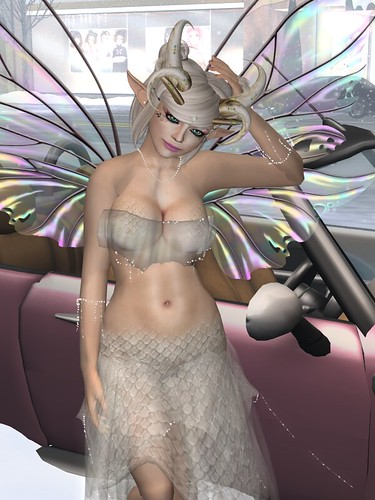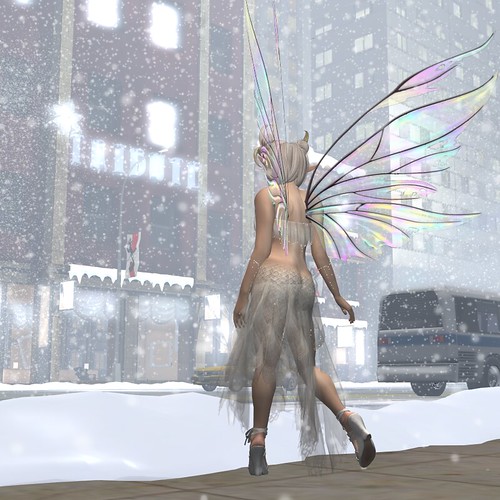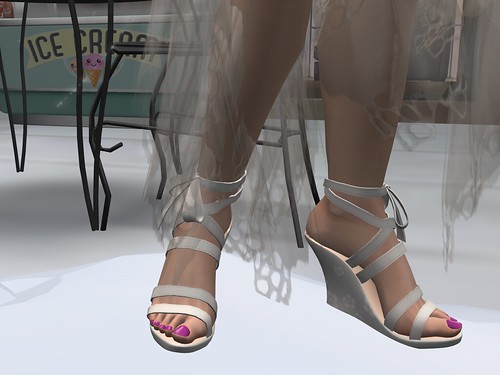Friday, February 8, 2013
50 Shades of Sexy Challenge: Sexy and Objectification
Recently, Rebecca Watson linked to a TED talk on The Sexy Lie (beginning of an article on the video here), about the objectification of women and what objectification means. Watson has been targeted for sexualized harassment for the last couple of years, along with many other prominent women, and a large section of this harassment has included drawings and images objectifying her in order to humiliate her, and she discusses some of what she receives in the post about this TED talk. In the video, Caroline Heldman begins by establishing what objectification is, which is what made me think about my participation in the 50 Weeks of Sexy Challenge - as part of the cycle is that women learn to objectify ourselves in response to seeing objectified images of women in the media. Much as I've been enjoying the change of pace, and the chance to show off clothing which tends to not emerge from my inventory, taking sexual images of myself - even my virtual self - is emotionally fraught; I have literally been told by a man that because I didn't dress like this all of the time he had no reason to pay attention to anything I said, an example of sexist objectification that still leaves me stunned.
Heldman sets up seven criteria for determining if an image engages in sexual objectification.
1) Does the image show only part(s) of a sexualized person’s body?
I don't think there's any argument than these pictures, by virtue of posing and lack of clothing, are sexualized. By and large, though, except for my feet pictures aimed at showing shoes up close (see below), I tend to take pictures facing the camera. In addition to a shoe pictures, I usually take one picture from behind, but in high contrast to the example in the first article, I don't think I tend to do more atmospheric than bend over and spread images. The images she uses, though, are particularly striking in the generic nature of them; without the facial features and any identifying marks, and with the tendency for models to conform to a narrow physical standard, it can be difficult to tell the women apart - something most noticeable when seeing a number of the images in a row, as she shows in the first article.
2) Does the image present a sexualized person as a stand-in for an object?
I have to admit that, while I don't often indulge in it, I have a weak spot for images of myself as a sculpture or a doll. I'm not quite sure where that impulse comes from, but it's interesting to think of it in the context of a large cultural objectification of women which I have internalized and refashioned that objectification
into self-identifying as cherishable or art itself. Definitely food for thought as I continue to explore Second Life and the various permutations of my identity.
3) Does the image show a sexualized person as interchangeable?
This one is particularly interesting as a standard for determining objectification because once I saw examples of it, it seemed so obvious, but the description of it seemed so unreal I was convinced I'd never seen an ad which did this. It reminds me strongly of one of the complaints Feminists like myself often have about the idea that there is a "right way" and a "wrong way" to pick up a woman - a concept found in it's extreme in the Pickup Artist movement, but apparent more subtly in standard culture perpetuated by media and social interactions, particularly comedy (which often hinges on an idea that women hate sex, love shopping, and accomplish most in their relationships via nagging). There are also populations of men who complain about how women always date "assholes" and won't date "nice guys" which similarly seems to treat women as one interchangeable woman who has set characteristics. In one of my experiences with being friends with a misogynist, I often felt that when that aspect of his personality snapped in, he made very weird judgements about what I would do and why, seemingly based on some Platonic Ideal of "woman" in his head which didn't match me at all. The idea of women as interchangeable and identical is a particularly pernicious one, and very difficult to combat as the characteristics of "All Women" are likely to be found in some women, though it is unlikely all of them would be found in a single woman.
4) Does the image affirm the idea of violating the bodily integrity of a sexualized person that can’t consent?
This concept seems to be much rarer, and I don't feel like it exists in my work at all, but the images associated with it are particularly disturbing, and can be incredibly subtle. One in particular was an iconic picture of a couple kissing after the Second World War ended, which turned out to actually depict a sexual assault - the man kissing the woman did not know her, did not ask her for permission, took her entirely by surprise, and if you look closely at the image you can see that she is not only not participating but is actually trying to push against his chest to get free while he traps her in his embrace. Consent is a thorny issue not because it is confusing or ambiguous, but because women's ability to refuse to consent to what a man or men do to her is threatening to male dominance, and thus it is undermined as much as possible in discussions of sex and rape. Every time a person says of a raped woman, "She was asking for it," they are denying the right of women to be secure in their bodies.
5) Does the image suggest that sexual availability is the defining characteristic of the person?
We're back to things I may participate in, via my cheesecake pictures, and possibly even these, since the goal is to appear "sexy" in them. I'm not quite sure in my mind how to resolve this, since the purpose of sexy images is to attract people, but the implication that an attractive woman wearing lingerie or other scanty outfits is available for any person who approaches is one I find deeply disturbing. Cheesecake was the predecessor to still pornography, though, portraying women as smiling, often vapid or simple figures who are engaged with alluring the viewer instead of accomplishing whatever nominal task they might be engaging in. Again, something to seriously consider going forward.
6) Does the image show a sexualized person as a commodity (something that can be bought and sold)?
At first blush this seems very similar to criteria two, and I think we could consider it a particularly nasty subset of criteria two. I think it's worth it's own notation, though, because this - more than the idea of woman-as-object - is part of the characterization of typical dating. Whether baldly, bluntly, crudely, or obliquely, the idea that the man buys the woman a meal and the woman has sex with the man is everywhere in contemporary Western culture. Even the books and magazines focused on convincing women to not give the man sex focus on the having-of-sex as a reward rather than something the woman herself enjoys (Why buy the cow if you get the milk for free?"). Women are specifically characterized as valuing food/activities/jewelry/marriage/security instead of sex, and expected to use access to their mouths and vaginas as currency for getting what they want. Women who want sex, and seek it out without trading it for something of relatively high value, are viewed as "cheap" not "having a good time." I think this dynamic is part of the pervasive objectification of women, and how women objectify ourselves.
7) Does the image treat a sexualized person’s body as a canvas?
This one again seems to be a subset of criteria two, and is sure to set off people who enjoy extensive tattoos. I think the distinction being made is between a canvas used to print an add or barcode, and a canvas for self-expression, but this is not an area I have much experience in or attraction to.
Next week - part two of this article dealing with part two of Heldman's article on Sexual Objectification, specifically detailing the harm caused by the sexual objectification of women.
( More pictures here. )
Credits:
Skin: De la Soul, Aestali - Cream Rose
Eyes: De La Soul, RooMee Eyes - Rainbow
Eyelashes 1: SLink, Mesh Eyelashes
Eyelashes 2: Flugeln Brise, 05-A
Eyeshadow: Boom, Hard Candy - Pink Sugar
Ears: Illusions, Seelie Ears
Lipstick: Croire, Glittery Gloss - sugarplum
Hair: Illusory, Yew - sugar
Horns: Rue, S.E. Sugar Skull Horns
Wings: Fancy Fairy, Azarelle
Hands: SLink, Mesh Hands
Jewelry: Eolande, White Pearls
Outfit: Evie's Closet, Lumina Nymph
Shoes: Lassitude & Ennui, Blossom Wedge Sandals
Poses: Glitterati
Location: Sugar Mainstore
Light Settings: Bryn Oh's Condos in Heaven
Photographed by Deoridhe Quandry
Post processing: Cropping, only
Subscribe to:
Post Comments (Atom)




No comments:
Post a Comment